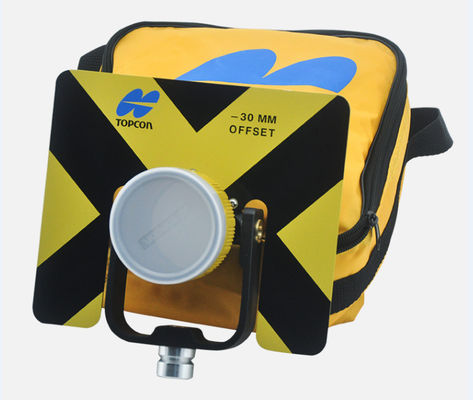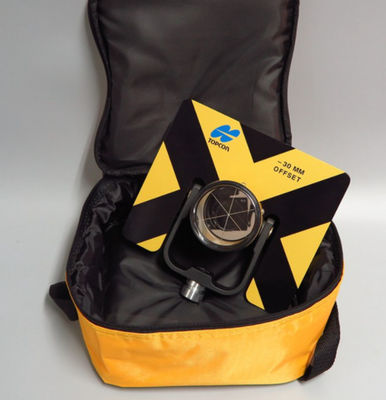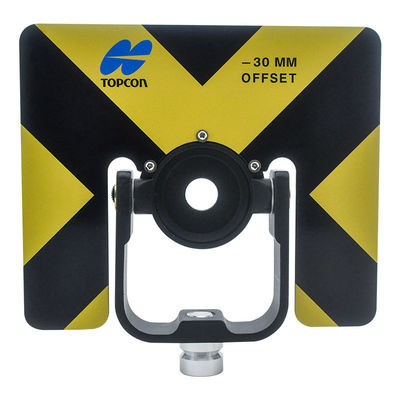-
Surveying Reflector Prism
-
Survey Mini Prism
-
360 Degree Prism
-
Total Station Prism
-
Prism Pole Bipod
-
Carbon Fibre Telescopic Pole
-
Telescopic Levelling Staff
-
Tribrach Adaptor
-
Instrument Tripods
-
Total Station Batteries
-
Total Station Battery Charger
-
Total Station Cable
-
Total Station Accessories
-
Surveying Instrument
Retro Surveying Reflector Prism Topcon Type 64mm For Total Station

Contact me for free samples and coupons.
WhatsApp:0086 18588475571
Wechat: 0086 18588475571
Skype: sales10@aixton.com
If you have any concern, we provide 24-hour online help.
x| Prism Constant | 0mm/-30mm | Type | Topcon |
|---|---|---|---|
| Prism Size | 64mm | Thread Type | 5/8x11 Female Thread |
| Package | Bubble Soft Bag | Target Plate | Metal |
| Color | Yellow And Black | Condition | New |
| Used For | Total Station | Prism | Corner Cube |
| Highlight | Retro Surveying Reflector Prism,Topcon Type Surveying Reflector Prism,64mm Total Station Surveying Reflector Prism |
||
Retro Surveying Reflector Prisma Topcon Type 0mm constant 64mm Big Size Prim
Model: AK10-1
Introduction:
Type: Single Prism
Color: Black and White
Used For: Total Station (Sokkia, Nikon, Trimble, Pentax, Topcon etc.)
Package: Soft Yellow Carrying Bag
Target Plate: Metal
Technical Data:
| Prism Constant | Prism Size | Weight | Thread |
|
0mm/-30mm |
64mm | 1Kg | 5/8x11 female |
Overview:
- This complete tilting prism assembly comes with a 64mm prism mounted in a sealed canister.
- The prism can either be mounted in a -30mm or zero offset position.
- With Removable Metal Target Plate.
- Tilting knob can fix the prism angle.
- High reflection rate by aluminum coated prism
- Un-foggy by aluminum coating on prism and sealed structure
- Prism Comes with a protective padded nylon carrying case.
Packing and Shipment
Each of Leosurvey prism has soft bag as inner bag. Normally 20pcs will be packed in a carton. The shipment can be arranged by Fedex/TNT/DHL express, by air or by sea if with large quantity.
Prism Constants in Survey Targets Explained
Have you ever used targets and total stations from different manufacturers (e.g. using a Leica Target with a Trimble instrument) and wondered why you’re having systematic errors in your data? Chances are you need to correct your constants.
One of the most common causes of error in surveys seems to be caused by the lack of understanding of prism constants. In today’s age of Land Surveying, the most commonly used targets contain a prism reflector that is used to return the signal back to the EDM of the Total Station. These prisms often have different characteristics defined by their construction which differs between manufacturers. In this article, I will try to explain:
- what a prism constant is and how it affects your EDM measurements
- how most manufacturers define their prism constants
- a list and comparison of the most commonly used prism and their constants and how to correctly use prism constants with instruments from other manufacturers (e.g. how to use a Leica prism constant with Trimble).
With so many manufacturers out there, this article would become too long and difficult to follow. Therefore I will be focusing on the most common equipment used throughout the world.
This article will focus only on Corner-cube prisms. The flat reflective targets have no constant as the signal bounces directly off the target’s surface.
What are prism constants
To define what the prism constant is, we must first explain how a prism target works. In principle, the target reflector is a piece of glass that bounces off the signal in the same direction it came from. The image below shows how the incoming EDM signal is reflected in the same direction it came from.
As you can see, regardless of the point of entry of the signal, it will be reflected in the same direction where it came from. Without going into much detail, this type of reflector is the most commonly used due to the simplicity of the design.
How does a target constant come into play? Well, the constant is defined as the correction of the measured distance based on the physical and design characteristics of the prism or reflector in the instrument. This is calculated based on the type and length of the glass prism itself and the mechanical mounting of the prism on the target holder. To put this into perspective, the sketch below shows a 2D view of a prism. The magnitude of the prism constant is defined as the distance between the true axis of the prism holder (the point around which the prism tilts up and down) and the virtual axis (the theoretical turning point S0).
True Axis represents the vertical axis of the target (i.e. centered on the point). Most commercially available prisms will always have the virtual axis behind the true axis, making the measured distance too long, thus requiring a negative correction for the distance (K is negative). Best case scenario is when virtual axis and true axis coincide, requiring no correction. In this case, there is a minimal effect on measurements of angles and distances caused by inaccurate prism alignment.
![]()
![]()









